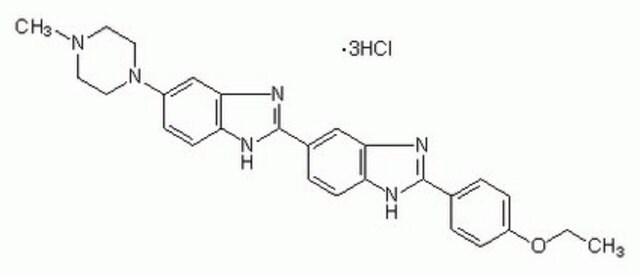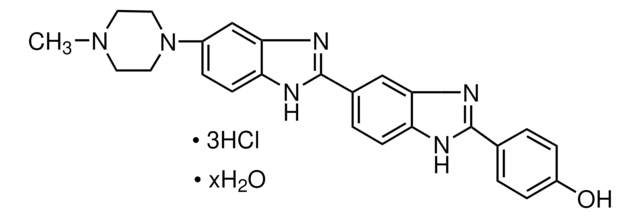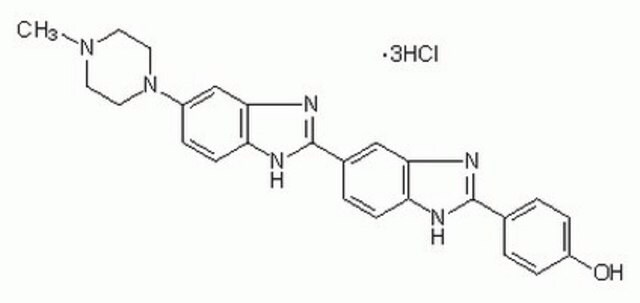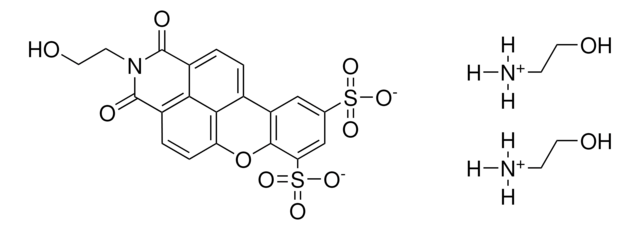14533
bisBenzimide H 33342 trihydrochloride
for fluorescence, ≥97.0% (HPLC)
Synonym(s):
2′-(4-Ethoxyphenyl)-5-(4-methyl-1-piperazinyl)-2,5′-bi-1H-benzimidazole trihydrochloride, HOE 33342, Hoechst 33342, bisBenzimide
About This Item
Recommended Products
grade
for fluorescence
Quality Level
Assay
≥97.0% (HPLC)
fluorescence
λex 340 nm; λem 510 nm
λex 355 nm; λem 465 nm in TE buffer; DNA
storage temp.
2-8°C
SMILES string
Cl[H].Cl[H].Cl[H].CCOc1ccc(cc1)C2=NCc3cc(ccc3N2)C4=NCc5cc(ccc5N4)N6CCN(C)CC6
InChI
1S/C29H32N6O.3ClH/c1-3-36-25-8-4-20(5-9-25)28-30-18-22-16-21(6-10-26(22)32-28)29-31-19-23-17-24(7-11-27(23)33-29)35-14-12-34(2)13-15-35;;;/h4-11,16-17H,3,12-15,18-19H2,1-2H3,(H,30,32)(H,31,33);3*1H
InChI key
FYEVKHPLBHLWHK-UHFFFAOYSA-N
Looking for similar products? Visit Product Comparison Guide
Application
Excitation max. = 346 nm
Emission max. = 460 nm
Biochem/physiol Actions
Packaging
Other Notes
related product
Storage Class Code
11 - Combustible Solids
WGK
WGK 3
Flash Point(F)
Not applicable
Flash Point(C)
Not applicable
Personal Protective Equipment
Choose from one of the most recent versions:
Already Own This Product?
Find documentation for the products that you have recently purchased in the Document Library.
Customers Also Viewed
Related Content
Nancy-520 for DNA Detection and Quantitation
Our team of scientists has experience in all areas of research including Life Science, Material Science, Chemical Synthesis, Chromatography, Analytical and many others.
Contact Technical Service










